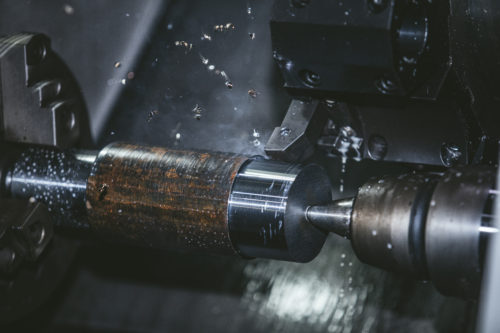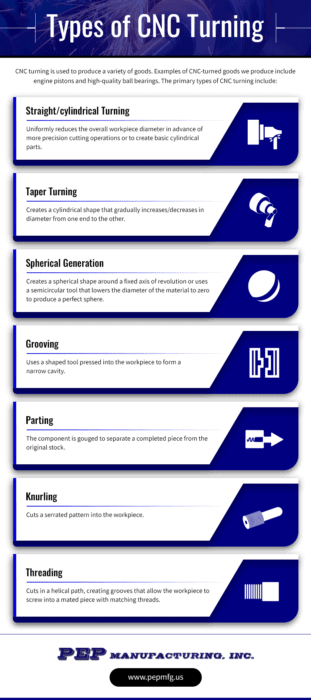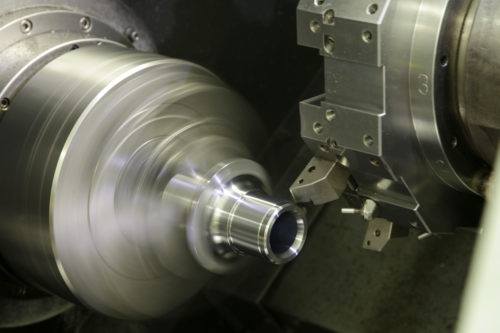 Turning is one of a variety of subtractive manufacturing processes used to create detailed parts and components. In computer numerical controlled (CNC) turning, this automated process relies on a chuck to hold and rotate bars of material. As this occurs, a tool is fed to the piece that removes excess material to develop features in accordance with a programmed design.
Turning is one of a variety of subtractive manufacturing processes used to create detailed parts and components. In computer numerical controlled (CNC) turning, this automated process relies on a chuck to hold and rotate bars of material. As this occurs, a tool is fed to the piece that removes excess material to develop features in accordance with a programmed design.
CNC technologies have enabled manufacturers to automate a variety of complex machining processes. While manual machining requires highly skilled machinists who can follow designs, CNC machining offers superior process accuracy and better part-to-part repeatability thanks to its ability to follow digital Computer-Aided Manufacturing (CAM) instructions generated from Computer-Aided Design (CAD) files.
Automated CNC technologies have enabled the mass production of part and components within very close tolerance limits, ensuring that parts generated from the same design may be used interchangeably in the assembly of automobiles, aerospace equipment, industrial machines, and much more. Lower defect rates and faster production ultimately lower the per-unit cost of each part, offering significant savings on high-volume production.


